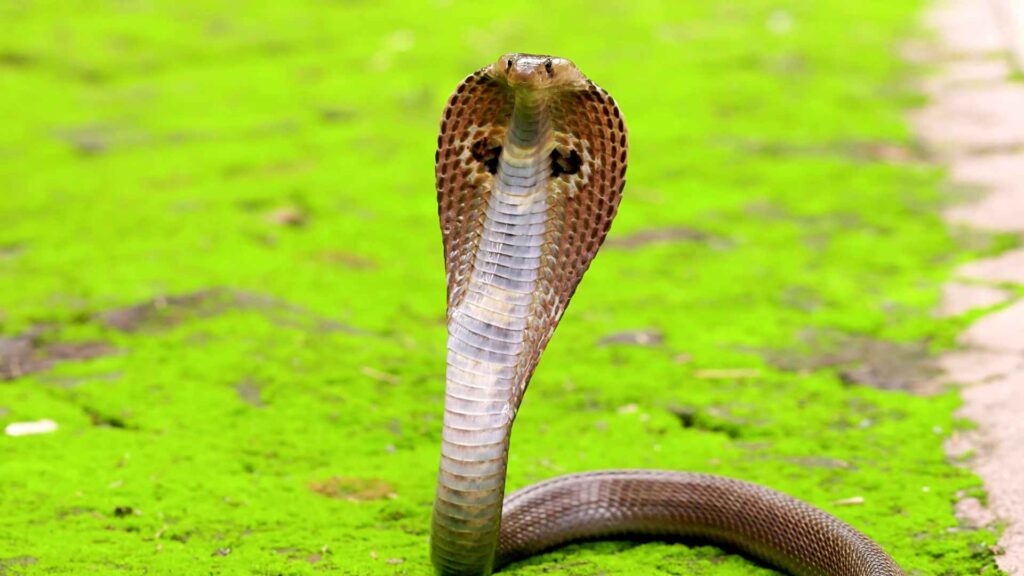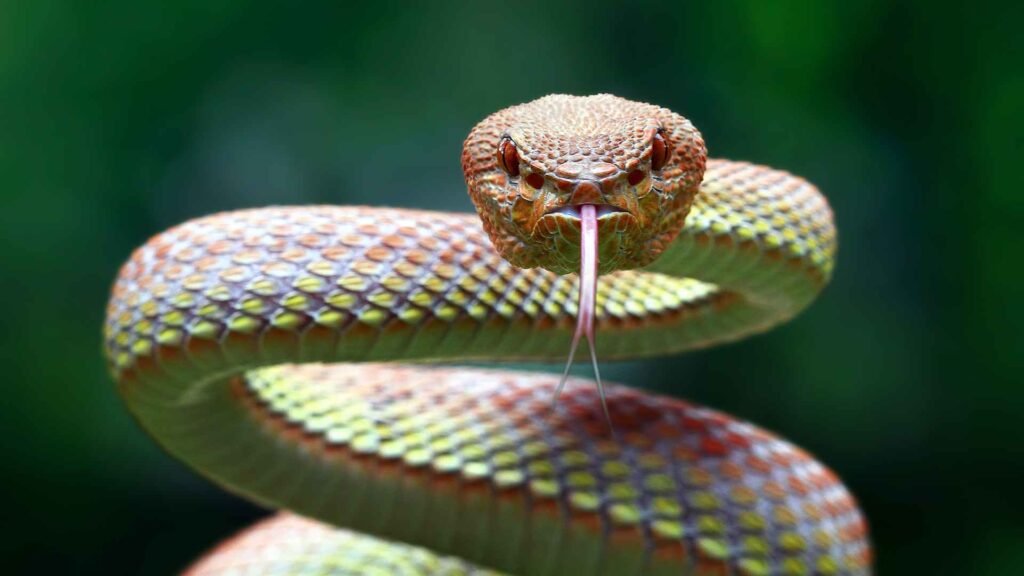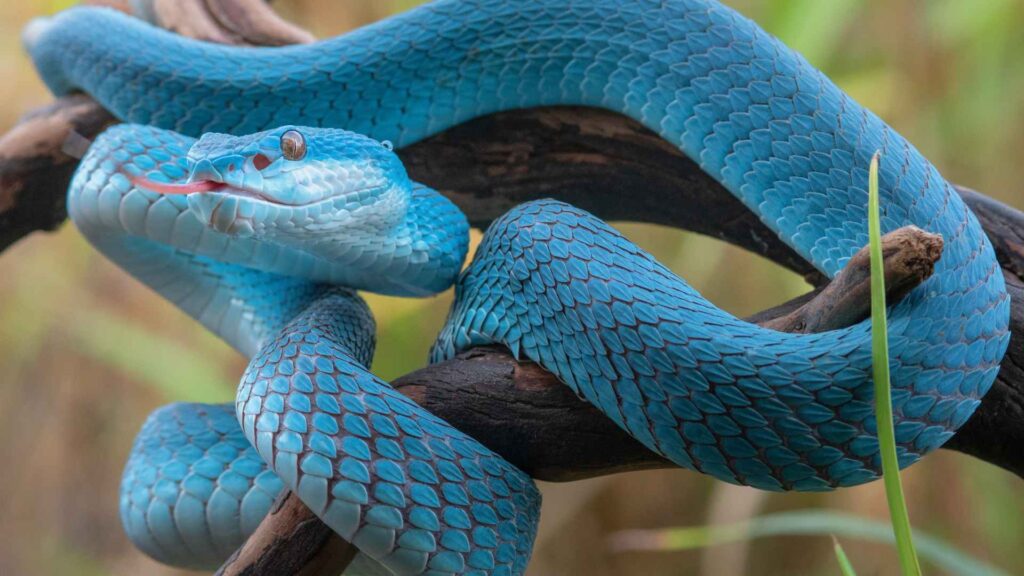Snakes are among the most mysterious and misunderstood creatures on Earth.
These slithering reptiles are full of surprises, from their incredible survival strategies to their ecological importance.
Dive into this ultimate guide to discover 145 mind-blowing facts about snakes that will leave you awestruck!
Snakes in Mythology and Culture
- Snakes have been symbols of wisdom, rebirth, and power in various cultures worldwide.
- Ancient Egyptians worshipped the cobra as a protective deity.
- The Ouroboros, a snake eating its tail, represents infinity in ancient symbolism.
- Snakes are central to Indian mythology, with the cobra considered sacred.
- Aztecs revered the feathered serpent god Quetzalcoatl.
- In Greek mythology, the Gorgon Medusa’s hair was made of living snakes.
- Native American cultures often associate snakes with healing and transformation.
- The Chinese zodiac includes the snake as one of its twelve signs.
- In Norse mythology, Jörmungandr is a giant sea serpent encircling the Earth.
- Snakes appear in biblical stories, symbolizing temptation and wisdom.
- The Rainbow Serpent is an Aboriginal Australian creation myth.
- Snakes were often used in medieval heraldry to symbolize protection.
- African folklore frequently features snakes as wise tricksters.
- In modern pop culture, snakes symbolize mystery and danger.
- Snake dances are performed in some cultures to invoke rain or fertility.

Snake Anatomy and Unique Adaptations
- Snakes have over 200 vertebrae, giving them exceptional flexibility.
- They “smell” with their tongues by detecting airborne particles.
- Some snakes can see infrared, detecting heat from warm-blooded prey.
- Snake scales are made of keratin, the same material as human nails.
- They shed their skin periodically to grow and remove parasites.
- Snakes lack eyelids but have a transparent scale protecting their eyes.
- Most snakes only have one functional lung.
- Their jaws can dislocate, allowing them to swallow prey larger than their heads.
- Snakes have forked tongues to pinpoint prey direction.
- A snake’s belly scales help it grip and move over surfaces.
- Some snakes, like the hognose, mimic death to avoid predators.
- Their heart can shift position to accommodate large meals.
- Snakes can detect vibrations through their jawbones.
- Sea snakes can breathe through their skin while submerged.
- Certain snakes have spurs near their tails, remnants of ancient legs.

Habitats and Ecological Roles
- Snakes are found on every continent except Antarctica.
- They thrive in deserts, forests, wetlands, and even urban areas.
- Sea snakes live entirely in marine environments.
- Snakes play a vital role in controlling rodent populations.
- Certain snakes help pollinate plants by feeding on nectar.
- Snakes consume pests that would otherwise damage crops.
- Some snakes are key prey for birds, mammals, and larger reptiles.
- Mangrove pit vipers can survive in both land and aquatic environments.
- Pythons and boas are excellent tree climbers.
- Desert-dwelling snakes can survive for months without food.
- Snakes play a role in seed dispersal by consuming fruit-eating prey.
- Underground-dwelling snakes aerate the soil.
- Their camouflage helps them evade predators and ambush prey.
- Rainforest snakes contribute to the balance of predator-prey dynamics.
- Snakes often inhabit abandoned burrows of other animals.
Venom and Defense Mechanisms
- Not all snakes are venomous; only about 20% of species produce venom.
- Snake venom can be hemotoxic, neurotoxic, or cytotoxic.
- The inland taipan has the most toxic venom of any snake.
- Rattlesnakes use their iconic rattle to warn potential threats.
- Cobras flare their hoods as a defensive display.
- The spitting cobra can eject venom several feet to deter predators.
- Coral snakes use bright colors as a warning signal.
- King snakes mimic venomous species to scare off predators.
- The boomslang’s venom causes internal bleeding in prey.
- Certain vipers feign strikes without injecting venom.
- Hognose snakes play dead to deter predators.
- Some species, like the black mamba, are both fast and highly venomous.
- Snakes can release a foul-smelling musk when threatened.
- Tree snakes use their agility to escape predators.
- Sea snakes can secrete venom even underwater.

Famous Snake Species
- The king cobra is the world’s longest venomous snake.
- Anacondas are the heaviest snakes, with some exceeding 500 pounds.
- Pythons are known for their incredible constriction strength.
- Rattlesnakes are iconic North American species.
- The black mamba is one of the fastest snakes in the world.
- Boa constrictors are excellent swimmers.
- Coral snakes are easily identified by their red, yellow, and black bands.
- Sea snakes are highly adapted to ocean life.
- The reticulated python holds the record as the longest snake ever measured.
- Milk snakes are harmless mimics of venomous coral snakes.
- Vipers are found on every continent except Australia.
- The gaboon viper has the longest fangs of any snake.
- The taipan is among the most venomous snakes in the world.
- Eastern brown snakes are responsible for most snakebite deaths in Australia.
- Ball pythons curl into balls as a defensive behavior.
Bonus Fun Facts
- Snakes can survive months without food.
- Some species give live birth instead of laying eggs.
- The longest snake fossil is over 40 feet long.
- Snakes are deaf but sense vibrations.
- They have a forked tongue for better directional smell detection.
- Certain snakes can swim faster than most humans.
- Snakes existed alongside dinosaurs.
- Their skin patterns serve as camouflage.
- Some snakes can “fly” by gliding between trees.
- Snakes can regenerate parts of their tails.
- Snakes don’t chew their food; they swallow it whole.
- Some species, like the anaconda, mate in water.
- Snakes have no external ears or noses.
- They can enter a state of brumation, similar to hibernation.
- Snakes are cold-blooded and rely on the environment to regulate temperature.
- Snakes do not have vocal cords but can hiss by forcing air through their glottis.
- The oldest known snake fossil is over 167 million years old.
- Some snake species can change color slightly to blend into their surroundings.
- Female snakes can store sperm for years, fertilizing eggs when conditions are right.
- The golden lancehead viper is found only on a single Brazilian island.
- Green tree pythons change color as they mature.
- Snakes were used as medical symbols in ancient Greece, represented by the Rod of Asclepius.
- Certain sea snakes can dive over 300 feet deep.
- The shape of a snake’s head often indicates whether it’s venomous or not.
- Snakes are ectothermic, meaning they rely on external heat sources.
- The egg-eating snake survives solely on bird eggs.
- A snake’s scales are hydrophobic, helping them stay dry.
- Some snakes give birth to up to 100 offspring in one litter.
- Tree-dwelling snakes often have a flattened body shape for easier climbing.
- Blind snakes rely entirely on touch and smell to navigate.
- The paradise tree snake can glide up to 10 meters between trees.
- Snakes can digest bones due to their strong stomach acids.
- The African rock python can kill and consume animals as large as antelopes.
- King cobras can “stand up” to a third of their body length off the ground.
- Snakes don’t drink water the way mammals do; they use capillary action with their mouths.
- The death adder is one of the fastest-striking snakes.
- Pythons incubate their eggs by coiling around them and shivering.
- Some snakes, like the vine snake, are excellent ambush hunters.
- The San Francisco garter snake is one of the rarest snakes in the world.
- A newborn snake is entirely independent and ready to survive immediately.
- The reticulated python can grow longer than a school bus.
- Burmese pythons are invasive in Florida and threaten local wildlife.
- The Eastern indigo snake is the longest native snake in North America.
- Certain snakes have light-sensitive cells on their tails to detect predators.
- Snakes play a role in ancient medicine, with venom used for treatments.
- Most snakes are non-aggressive and avoid humans.
- Snakes hibernate in large groups for warmth during winter.
- Albino snakes lack the pigments that give their skin its usual color.
- The Mexican black kingsnake is immune to the venom of other snakes.
- Snakes have been sent to space to study the effects of microgravity on their movements.
Snakes are fascinating creatures with unique adaptations and a crucial role in ecosystems. Their diversity and enigmatic nature make them a subject of endless curiosity.
Whether you admire them for their beauty, fear them for their venom, or marvel at their evolutionary success, snakes are undeniably amazing!
